Flames flickered as we sat around a campfire one winter evening while I told a story to friends about an unconventional method for starting a campfire.
Sitting around a fire pit like this one on a bitter-cold winter night, a group of college students in my snowshoe class was trying to start a fire. The facility had ample fire logs but no small wood or kindling. It was dark, and snowfall heavily covered the terrain, so finding natural fire starters was most difficult.
One of my students said he had a solution. He put on snowshoes and hiked to his vehicle in the facility parking lot about a half-mile away. He returned with a portable industrial-grade gas blowtorch. With a few long shots from the torch, he got the fire going.
I looked on with awe. I never saw that before. And I don’t recommend a blowtorch for starting campfires. But in this rare case, it did the job.
Friends laughed when they heard my story. We then stared into the flames for a moment, and soon someone else brought up another amusing story. A campfire brings us together in laughter and harmony as we play games, tell stories and jokes, and recall memories.
Some of the links in this article may contain affiliate links. When you make a purchase using these links, part of the proceeds go to Snowshoe Mag. Additionally, as an Amazon Associate, we earn from qualifying purchases. Please see our disclosure for more details.
Campfire Functions
However, campfires serve several other functions besides being a setting for stories. Here are a few other functions for having a campfire in winter.
Warmth
First, warmth is at the top of the functions list. In my university backpacking classes, I took students on winter backpacking trips annually. They huddled around a fire to keep warm, and they cherished that warmth from the last golden embers before climbing into their tents on a cold night.
Read More: Tips & Tricks for Cold-Weather Backpacking & Winter Camping
Light
A campfire also provides light. Although not ideal lighting to read by, it does offer enough light to see fellow campers’ faces and brighten up an area of the camp.
Cooking
Cooking is another function of the winter campfire. Although I often cook over a gas stove (like this one), the taste of food cooked over an open fire is hard to beat. An excellent meal option is individual foil-wrapped chicken stew on the coals from our campfire.
Read More: The Pack & Snowshoe Experience
Signaling
Campfires have been important for signaling and as a beacon. When lost, fires can serve as an emergency signal. Three of anything is a universal signal for distress. Some rescues have been made by burning three small fires in a triangle.
Used as a beacon, the campfire at night provides a central location to help with orientation in a campsite and to guide those back who may have wandered off from camp.
Read More: Survival Tips for Snowshoeing Enthusiasts
Ambiance
And finally, the campfire serves as ambiance. It sets the mood for enjoyment and enrichment in nature. Henry David Thoreau wrote, “The fire is the main comfort of the camp, whether in summer or winter and is about as ample at one season as at another. It is as well for cheerfulness as for warmth and dryness.”
I’ve had many discussions around a campfire where we solved life’s greatest mysteries, pondered the value of our existence, discovered the meaning of the universe, and debated all aspects of religion and politics. Well, maybe not solved or discovered all. But we enjoyed the conversations.
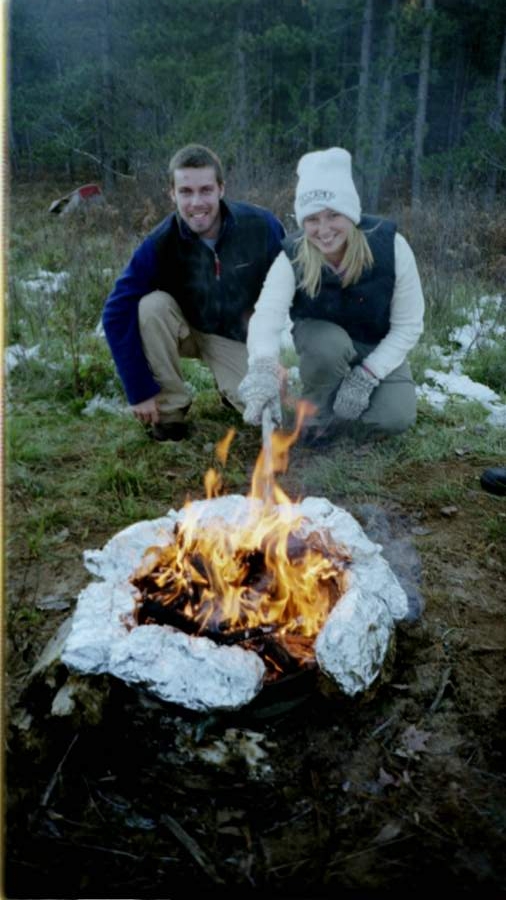
One of the functions of a campfire is cooking. Here, campers prepare dinner around a pan fire. Photo: Jim Joque
Preventing Forest Fires
A Leave No Trace Center for Outdoor Ethics principle is to “minimize campfire impact.” Since campfires can impact the backcountry, Leave-No-Trace calls for alternatives, such as using a lightweight stove for cooking and a candle lantern for light.
Use an Established Fire Ring Or Pan Fire
But when campfires are used, they recommend utilizing an established fire ring and keeping the fires small, using only sticks from the ground that can be broken manually. There is no need for a bonfire in the woods. Large fires are dangerous and a threat to starting forest fires. Campfires built-in or on the ground can be potentially hazardous, especially if there are roots or flammable duff underneath.
When an established fire ring is not available, a technique I practice and teach is making a pan fire. Use a small charcoal grill pan or metal feed pan. Fill the bottom of the pan with about an inch or two of sand or soil. In winter, carry in the sand since the frozen ground can be difficult to dig. Then build a small fire in the pan. I often place the pan on a circle of rocks for elevation.
When finished with your pan fire, be sure to burn all the wood to ash and put it out with water. The next day, you can scatter or bury the ashes in the forest.
Check the Regulations
Of importance, if heading into the backcountry is to check fire regulations for that area. Follow county, state, and federal postings that say, “No fires permitted.”
Parks and forest areas may post the fire danger ratings from low to high fire danger. Do not use a campfire when fire dangers are high. Keep in mind Smokey the Bear’s famous words, “Remember; only you can prevent forest fires.”
Keep Weather Conditions in Mind
Other reasons not to have a campfire are if there has been a period of drought and extremely dry weather. Also, if there are high winds, use alternatives such as stoves and lanterns.
Read More: Leave No Trace Principles for Snowshoers
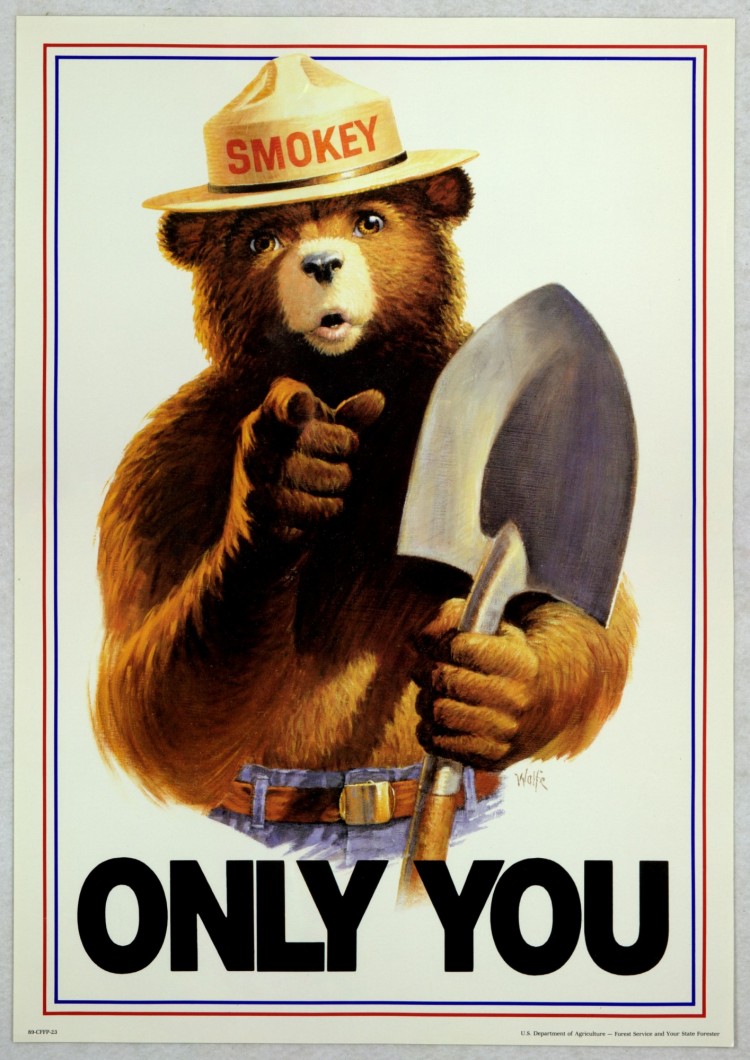
Smokey says, “Remember, only you can prevent forest fires.” Photo: USDA National Agricultural Library
How to Make a Campfire
Now that we know campfire functions and a few Leave No Trace tips, we can make the campfire.
Prep your Space
In snow, shovel out the firepit and several feet around it for sitting. If there is no fire pit and you’re using a pan fire, clear snow to the ground where the pan can sit. During other seasons, clear leaves and brush at least 5 to 6 feet from the firepit.
Safety while managing a fire is essential, given that injuries create a problem being far from professional medical treatment. Watch your footing around a fire, especially at night when it is dark, and keep camp gear away to avoid tripping. Bring your first aid kit with bandages and medications, and have the know-how to treat burns.
Choose Your Fire Starter
Play it safe when starting your campfires. There is no need to use a charcoal lighter or other flammable fluids to start a fire. Never use gasoline.
There are many natural fire starters to use, such as downed birch bark. Consider using commercial fire starters that are environmentally friendly, Or use homemade fire starters such as dryer lint or cotton balls dipped in Vaseline.
I invited a guest to my backpacking class who completed training from Tom Brown, the popular wilderness survival expert. My guest demonstrated how to make a fire using a bow-and-drill (a wooden dowel that spins against the wood using a stringed bow). Friction from this process results in creating an ember that is blown into tinder to start a fire.
He built a teepee fire lay and used the bow-and-drill to create an ember. He then lit the tinder, which ignited the teepee. I appreciated the skill this person had in starting a fire the back-to-basics way.
Gather Your Materials
Building a campfire does not require having to complete a Tom Brown course. But a match to a log won’t start a fire. So, before making your fire, find three kinds of fire material.
- Tinder – Look for spindly sticks, downed pine needles, and dead leaves or grasses.
- Kindling – Collect wood sticks about the thickness of a finger and 6 to 12 inches long.
- Fuel – The fuel is wood thicker than kindling, perhaps 1 to 2 inches thick. Use only dead wood for fuel.
Set the Stage
Place tinder in the area where you plan to build a fire.
Using the kindling you gathered, build a teepee, lean-to, or log-cabin fire lay around the tinder. The teepee is made by lining sticks upright against each other in a circular manner. A lean-to involves laying sticks up against a small log. And the log cabin is stacking sticks in a square pattern by placing them on top of each other similar to building a cabin with Lincoln Logs.
Use your chosen fire starter, which could include matches, a lighter, or flint, and steel. You can also buy a wind-proof lighter at most sporting goods stores. I prefer using wood-stove matches carried in a waterproof container.
Once the fire gets going, add fuel as needed.
Never leave a fire unattended. When done, douse all fires with water until the coals are cold.
Read More: Snowshoeing, Snow Camping, & Snowstorms
It Doesn’t Get Any Better than This
The campfire offers an opportunity to relax, contemplate the meaning of life, mellow one’s mental health, and be all that you can be.
I’m reminded of a past quote from my outdoor journal. “Later that night, after a small campfire and supper, I returned to the golden coals of my pan fire to catch the last rays of heat before crawling into my winter shelter. Changing into all dry clothes, I crawled into my cozy sleeping bag and listened to the voices of students at a distant campsite until falling fast asleep. This was the end to a perfect night and a perfect winter camping story.” It just doesn’t get any better than this.
What recommendations do you have for building a winter campfire? Please share your thoughts with us in the comments below.
Parts of this article are from “Firestarters: A Primer for Campers and Backpackers.” By Jim Joque, Silent Sports Magazine, May 2008.
Read Next:
Snowshoeing for Beginners: The First-Timer’s Guide
The Snowshoe & Tent Experience
Gear Review: GSI Kung Foon
MSR XKG EX Review: The Rugged Backcountry Stove

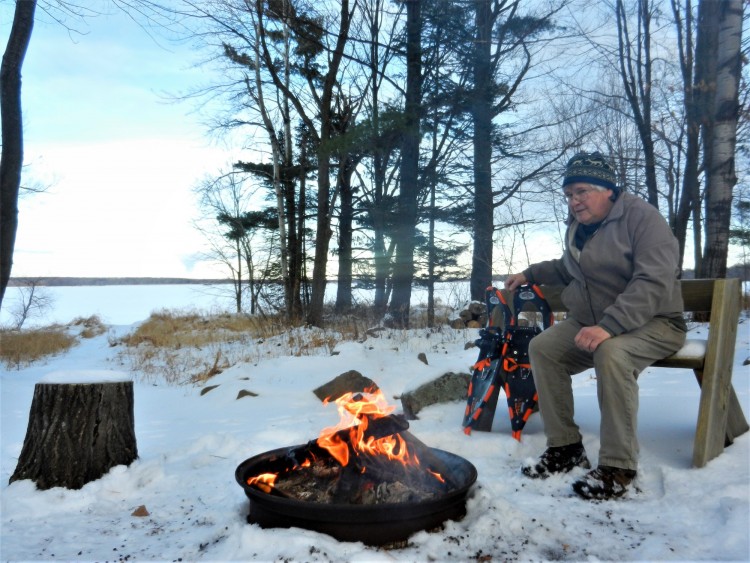
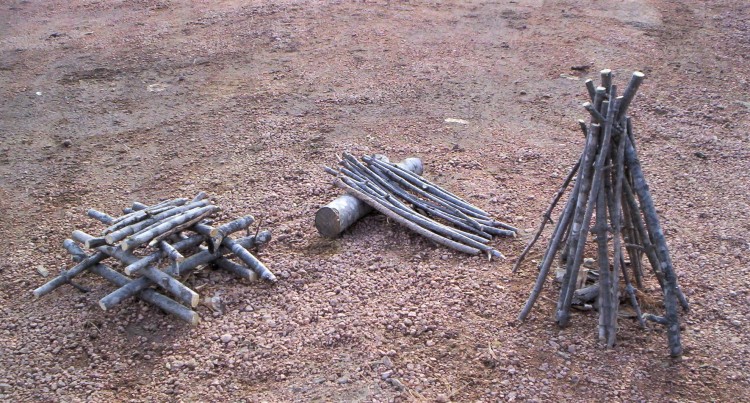
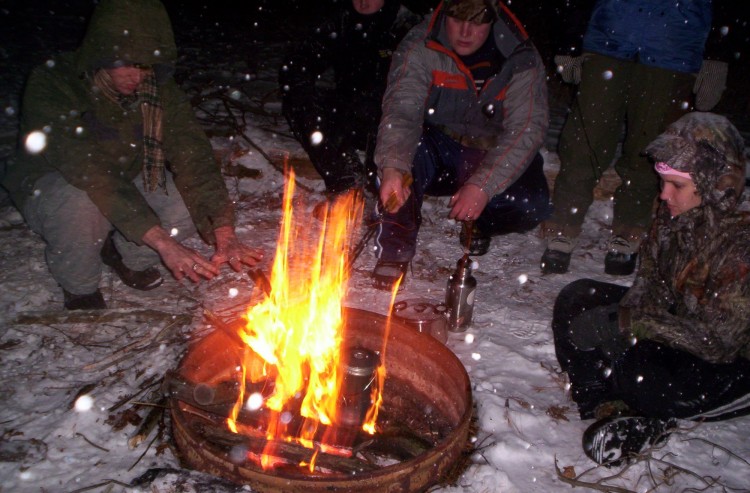
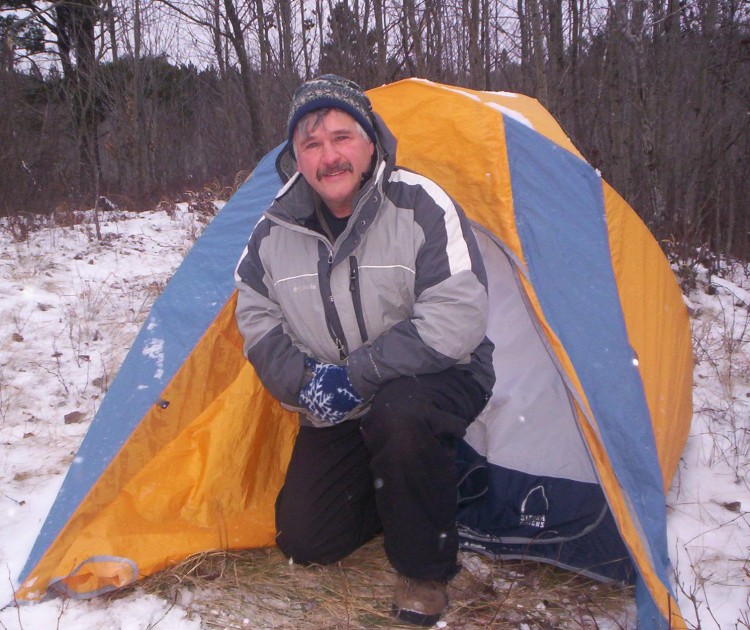
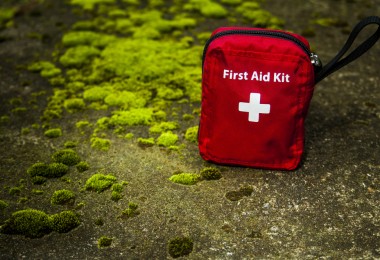
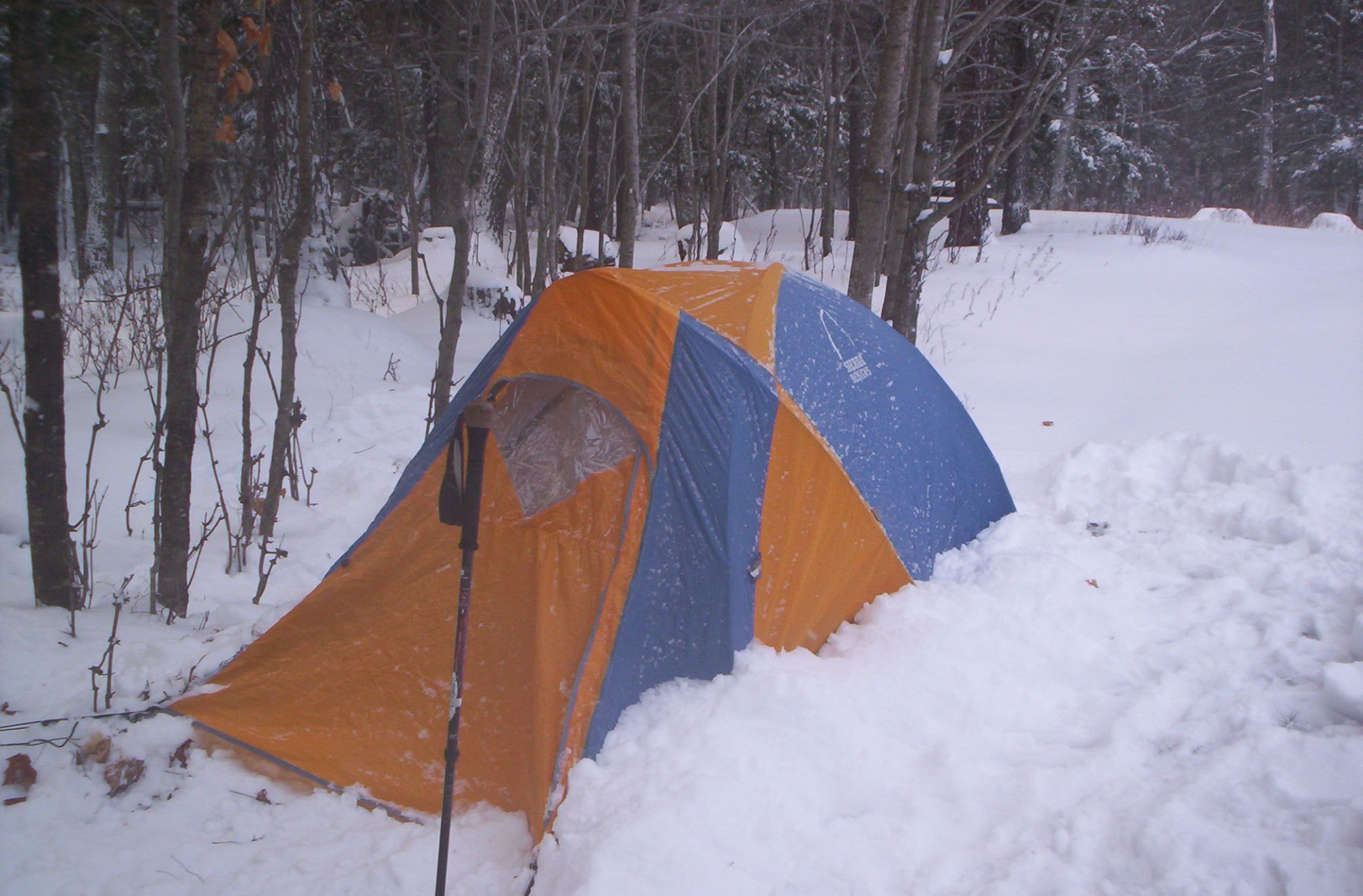

Leave a Comment